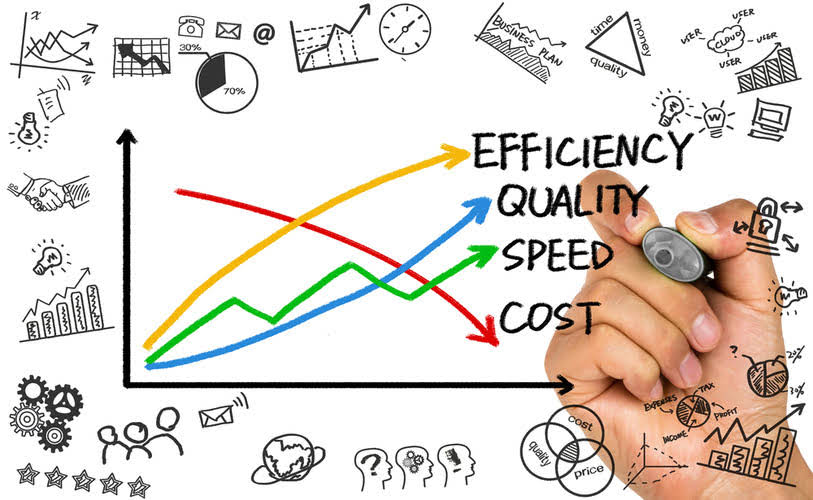The Best Accounting Software for Multiple Businesses

You and other shareholders then get a more holistic view of the entire organization. Equity consolidation is a critical aspect of accounting for companies with multiple owners. An example of equity consolidation comes from ABC Corporation, formed by three industrial partners who https://dev.nalabagam.com/bond-amortization-schedule-effective-interest/ each owned 33% of the company’s shares. Due to their ownership structure, the partners had to consolidate their respective equity interests to accurately report the financial position and performance of ABC Corporation. Note that Desktop does not include a report option to produce consolidated financial statements.
- QuickBooks Online Advanced is a popular choice for mid-sized to large businesses that require detailed reporting and robust features.
- Reorganizing entities track asset transfers, liabilities, and equity adjustments.
- Examples of ERPs with multi-entity functionality are NetSuite OneWorld, Microsoft Dynamics 365 Business Central, and Sage Intacct.
- This can manifest as a parent company with subsidiaries, where each subsidiary functions as a separate legal person with its own liabilities and tax obligations.
- Once that’s complete, you’ll have to aggregate the subsidiary’s and parent’s cash flows.
- Each entity keeps its own financial records, but they all belong to the same parent company.
AccountsBalance
This phase often requires the biggest technical lift but creates the foundation for automated consolidation. Deploy dashboards and reporting tools that provide real-time visibility across all of your entities. Strong internal accounting controls with automated approval workflows and audit trails can help monitor transactions and catch irregularities before they become bigger issues. Real-time reporting allows for faster decision-making and more responsive management of entity performance. Design financial practices and use accounting automation software that can allow your business to grow without requiring complete process overhauls.

Key benefits of multi-entity accounting
- Therefore, it’s important to match them before producing a consolidated financial statement.
- Sage Intacct, NetSuite, QuickBooks Enterprise, Xero, and Microsoft Dynamics 365 stand out as excellent choices, each catering to different business sizes and requirements.
- Unfortunately, calculating currency conversions manually in Excel is often a slow and laborious process as you have to create individual cash flow statements for each subsidiary and the parent company.
- QuickBooks offers the cloud-based QuickBooks Online software product and the on-premises QuickBooks Desktop product line.
- On the other hand, downstream transactions are only visible to the parent company.
- Proper software allows you to switch between dashboards in real time, control everything from a single location, and maintain your workflow consistent, without any unnecessary clicks, or lost time.
Determine whether your businesses need just accounting fundamentals, such as invoicing, or more advanced features, such as the in-depth reports available with higher-end pricing packages. Move vendors that offer high-quality tools for your most important needs to the top of your list. In all of the years we’ve tested FreshBooks, the platform has blown other vendors’ invoicing interface and features out of the water. We love that we can create invoices from one tab since other platforms often lack this capability.

Multi-Entity Spend Management Software
QuickBooks Enterprise is an advanced version of QuickBooks, designed for larger businesses with multiple entities. It offers features like consolidated reporting, centralized vendor management, and customizable financial reporting to help with multi-entity accounting. Sage Intacct provides one of the leading solutions for multi entity companies, with the ability to view both the unique and consolidated views. This deep financial reporting allows you to look for ways to optimize and scale, helping you strategize for future growth.
Top multi-entity accounting software features to look for include customizable workflows, separation of entities, and both high-level and detailed financial views. While there will always be a need for accounting on a local or regional level, a parent company will also need a centralised view of financial data from various entities, offices and subsidiaries. Enhanced reporting features allow for the creation of detailed financial reports, customized to meet the specific needs of the organization. This includes the ability to generate reports for individual entities or consolidated reports for the entire organization, improving transparency and understanding of financial performance. Compliance is a formidable challenge, as entities may operate under different regulatory frameworks.
Know exactly what you’re seeking from accounting software.
You may find that another ERP system best fits your multi-entity company’s needs for its accounting functions and budget. Are they on the same page regarding the systems and process changes that must be undertaken to ensure success? An accounting manager who understands your key metrics and can be a accounting for multiple entities transformation driver for your change management strategy is vital.
- Keeping current with introducing any new regulation promptly allows for organizational compliance and prevents punitive penalties for non-compliance.
- To get started, open the Apps menu in QuickBooks and explore integration options that connect with your existing platforms.
- By the time this process is done, there’s a good chance the numbers are already out of date.
- Addressing these challenges is critical for organizations to maintain accurate financial records, achieve operational efficiency, and ensure regulatory compliance across their multi-entity structure.
- A subsidiary might show strong local currency performance while appearing weak in the consolidated reports due to conversion rates.
- This model involves multiple S Corporations owned by different individuals, all providing services to a central multi-member LLC (MMLLC).
Each entity acts as an individual player in the financial ecosystem, often with its requirements, regulatory demands, and business processes. In an accounting context, the phrase “multiple entities” implies the management of these distinct financial subsets within a larger organizational network. Multi-entity accounting serves as an integrated accounting solution Travel Agency Accounting tailored for parent businesses overseeing multiple companies and diverse entities. Multi-entity accounting software is invaluable for complex organizations that need to consolidate financial records and reporting across multiple units. A business with multiple entities first needs to make sure they’re all set up properly.

Any type of manual process leaves room for someone to be out of the office, get behind on tasks, or make mistakes when transferring data. Automation removes much of the potential for human error and helps your accounting processes become more of a tool and less of a burden. A CEO might want to know how a product is performing across the company when considering whether to sell it. If the company is divided geographically and operating without consolidated accounting systems, this means asking each geographic entity to send in its sales data on that product and then compiling it. Control your finances, not your teams, with one spend management solution across entities.
Technology companies present unique valuation challenges due to complex financial instruments and a heavy reliance on intangible assets. Trends such as generative AI and clean energy influence investment decisions and valuations. Additionally, regulations governing broadband in MTEs can affect technology companies by altering service availability and costs, impacting operations and customer acquisition.
Ensuring Accuracy Across All Businesses
However, organizations that invest in standardized processes and automated platforms can gain real-time insights and operational efficiency that support sustainable growth across all their business entities. Key features should include multi-currency handling, intercompany transaction management, and automated consolidated reporting. Evaluate platforms based on your entity count, complexity requirements, and integration capabilities with existing financial management tools. During consolidation, the multi-entity platform automatically performs several functions.


